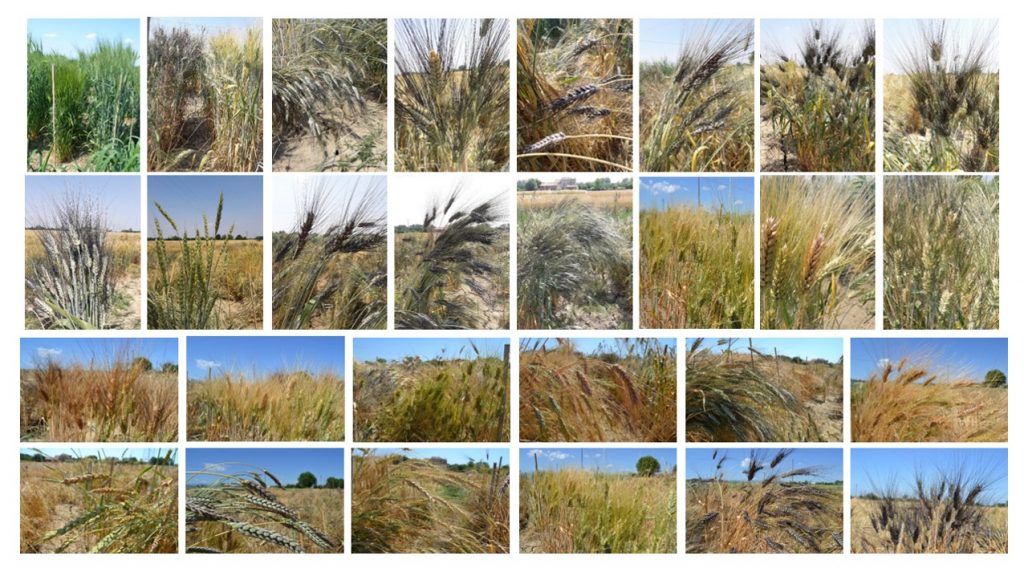
Durum wheat
“Pasta” is one of the most famous Italian dishes and the symbol of the Italian cuisine. Everyone knows that the basic ingredient of pasta is durum wheat, but not everyone knows that this crop is still object of both modern breeding and scientific research.
Durum wheat [Triticum turgidum L. ssp. durum (Desf.) Husn.] is one of the most important crops for human nutrition worldwide, with production of more than 40 million tonnes per year. The European Union is the biggest producer, followed by Canada, Turkey, United States, Algeria, Mexico, Kazakhstan, Syria, and India. Among UE countries, Italy is the leader for durum wheat production. One of the typical cultivation areas of durum wheat is the Mediterranean basin. Indeed, durum wheat is the basic ingredient for the principal foods of the Mediterranean tradition, such as pasta, cous cous, burghul.
Durum wheat evolved from emmer [T. turgidum ssp. dicoccum (Schrank ex Schübl.) Thell.], which in turn originated by wild emmer [T. turgidum ssp. dicoccoides (Körn. ex Asch. & Graebn.) Thell.] in Fertile Crescent, around 10,000 years ago. Recently, the whole genome of durum wheat has been sequenced, thanks to the joint effort of many research groups at international level, including Italy. This important scientific result has given new impulse to scientific research and molecular breeding on durum wheat, thanks to the availability of new genetic and genomic data.
Wheat breeding is principally aimed to elevate yield potential with stability, reduce the requirements for water, fertilizers, and other inputs without affecting productivity, increase the ability of wheat to grow on marginal lands, and protect wheat production from emerging threats of climate change. In addition, one of the objectives of wheat breeding is the improvement of its nutritional quality and healthy value. To reach these objectives, the identification and analysis of new genes and their related gene variants is needed.
Looking for genetic diversity
But where looking for these new genetic resources? It is known that the cultivated varieties, in durum wheat as in other species, have lost most of the original genetic variability present in their ancestors. In the last decades, crop species underwent a strong genetic erosion, since the traditional varieties have been replaced by selected modern cultivars, that are characterized by high yield and ease of processing, but also by a lower resistance to pathogens and a lower tolerance to environmental stresses, such as drought or thermic stress. This condition caused a loss of relevant germplasm resources, that nowadays would result useful for the need of a sustainable agriculture, in a global contest of climate change and environmental crisis.
Genetic diversity is still present in wild genotypes, that are the ancestors of the modern cultivars, as in the traditional local varieties, named landraces. The landraces are defined by specific characteristics: i) a clear historical origin, ii) a strong genetic identity, iii) adaptation to local and specific environmental conditions, iv) a low formal breeding process, v) the association with traditional and local agricultural practices.
In this scenario, the scientific communities collaborate to constitute germplasm collections worldwide, with the purpose of maintaining and preserving genetic variability. These collections represent a primary resource to examine genetic diversity of crop species and to identify new traits of interest useful for breeding, to develop new genotypes with higher tolerance to environmental constraints and higher healthy value.
Author: Elena Baldoni